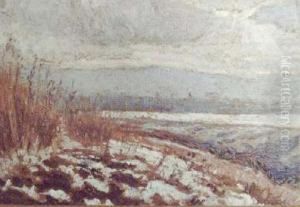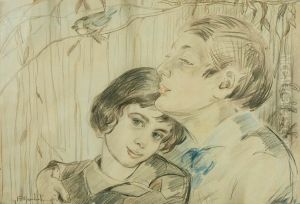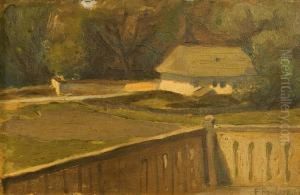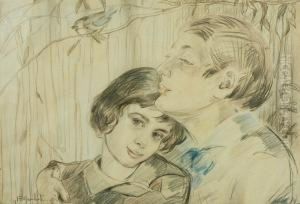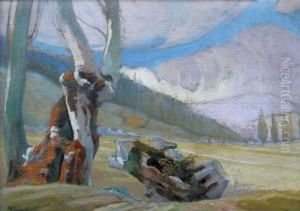Franciszek Rembertowski Paintings
Franciszek Rembertowski was a Polish artist, born in 1867 and passing away in 1913. His life and career were set against the backdrop of a Poland that was undergoing significant social, political, and cultural changes. During his lifetime, Poland was partitioned between Russia, Prussia, and Austria, which had profound effects on the nation's identity and its arts. Despite these challenging circumstances, Rembertowski emerged as a significant figure in Polish art, contributing to the development of modern Polish artistic expressions.
Rembertowski's artistic journey began at the Academy of Fine Arts in Kraków, a prestigious institution that played a crucial role in shaping the talents of many Polish artists. His studies there equipped him with the foundational skills and knowledge that would inform his artistic practice. He was particularly drawn to painting and illustration, mediums through which he explored a variety of subjects, from landscapes and portraits to scenes of everyday life and historical events.
Throughout his career, Rembertowski exhibited a keen interest in capturing the essence of Polish culture and the spirit of its people. His works often reflected the social realities of his time, imbued with a sense of nationalism and a longing for Poland's independence. Despite the dominance of foreign rule, he sought to preserve and celebrate Polish heritage through his art, contributing to the broader efforts of cultural resistance against the partitioning powers.
Rembertowski's style evolved over the years, showing influences from various artistic movements of the late 19th and early 20th centuries. However, he remained committed to realism, striving to depict his subjects with honesty and depth. His landscapes and portraits are particularly noted for their attention to detail, sensitivity to light, and the emotional depth they convey.
Franciszek Rembertowski's contributions to Polish art were significant, yet his name is not as widely recognized internationally as some of his contemporaries. Despite this, within Poland, he is celebrated for his dedication to portraying the Polish experience and his role in the cultural preservation during a turbulent period in the nation's history. His death in 1913 marked the loss of a passionate artist who had dedicated his life to capturing the beauty and struggles of Poland. Today, his works are preserved in various Polish museums and collections, serving as a testament to his artistic legacy and the enduring spirit of Polish culture.
